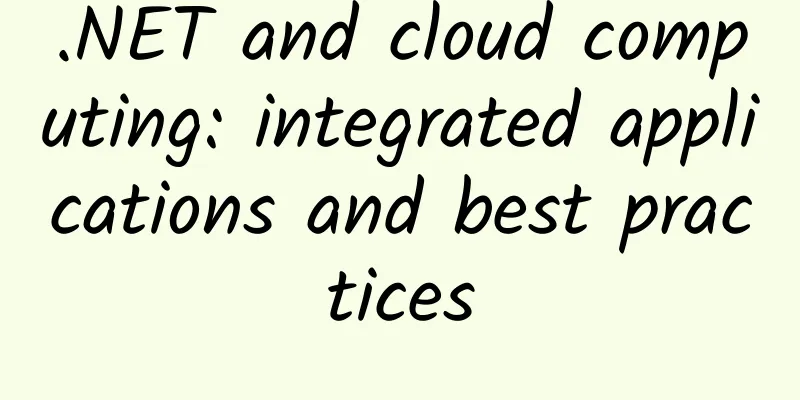.NET and cloud computing: integrated applications and best practices

|
With the rapid development of cloud computing, more and more enterprises and organizations are migrating their applications to the cloud to take advantage of the elasticity, scalability, and cost-effectiveness provided by cloud computing. As a mature and stable development platform, the integration of .NET with cloud computing platforms has become the first choice for many developers. This article will introduce how to integrate .NET applications with cloud services (such as Microsoft Azure, Amazon Web Services, etc.), and explore some common cloud computing application scenarios and best practices. 1. Overview of .NET and Cloud Computing IntegrationThe .NET framework provides a wealth of tools and libraries that allow developers to easily build and deploy cloud applications. By integrating cloud services such as Azure and AWS, .NET developers can use the storage, computing, database, analysis, and artificial intelligence services provided by these platforms to quickly build efficient and reliable applications. 2. Common cloud computing application scenarios
Integration Best Practices1. Use Azure as a cloud serviceSample code: Use Azure Functions to implement a simple HTTP trigger function. 2. Use AWS as a cloud serviceSample code: Build a RESTful API using AWS Lambda and API Gateway. First, you need to set up an AWS Lambda function and build your API logic using .NET Core. Here is a simple Lambda function example: You can then use AWS API Gateway to create a RESTful API and map the API to your Lambda function. IV. ConclusionBy combining .NET with cloud computing platforms (such as Azure, AWS, etc.), developers can build efficient, scalable and reliable applications. These platforms provide a wealth of services and tools to help developers quickly build, deploy and manage cloud applications. With the continuous advancement of cloud computing technology, the integration of .NET and cloud computing will become closer, bringing more innovation and opportunities to developers. |
<<: Scrcpy open source Android device control tool
>>: The official version of iOS 17.4 is here, summary of new features!
Recommend
Undrinkable "milk" + seafood waste = national treasure?
The Zhejiang Provincial Museum houses several anc...
How to play the media matrix in new media operations, analyze mainstream media platforms from three dimensions!
Preface: The earliest batch of self-media people ...
There is a lot of sand on the earth, and there are even more stars in the universe. How many galaxies are there in the universe?
How much sand is there on Earth? This is a questi...
Tesla shareholders claim $16.8 billion for abuse of power for personal gain, Musk breaks record for compensation for top executives
Elon Musk was sued by Tesla shareholders for alle...
In the era of artificial intelligence, the first job to be eliminated is the driver
Unexpectedly, in the era of artificial intelligen...
Do you know about the top 10 most popular fission marketing?
The article breaks down the top ten most popular ...
Can ordinary people diagnose depression, mania, and bipolar disorder on their own?
Review expert: Chen Mingxin, national second-leve...
Beware! The “strongest invasive pest on earth” is entering its active period
As the weather warms up, red fire ants enter thei...
Solid info! A brief analysis of the three major monetization methods of the community
We all know that the fan economy has arrived. Man...
The gorgeous fireworks you see are actually "electrons" dancing
During festivals or grand events, fireworks are o...
Faced with the cold winter of VR market, Sony, Samsung, Google and HTC decided to join forces to keep warm
Looking back at 2016, the term VR suddenly appear...
This method sounds outrageous, but it can really help you get rid of anxiety and get rid of emo
Working from home has disrupted the rhythm of lif...
South Korea's Ministry of Land, Infrastructure and Transport: South Korea's new energy vehicle ownership exceeds 1 million
Data released by the Ministry of Land, Infrastruc...
How to evaluate, monitor and promote KOL marketing channel conversion?
With the rapid development of the Internet , we h...









